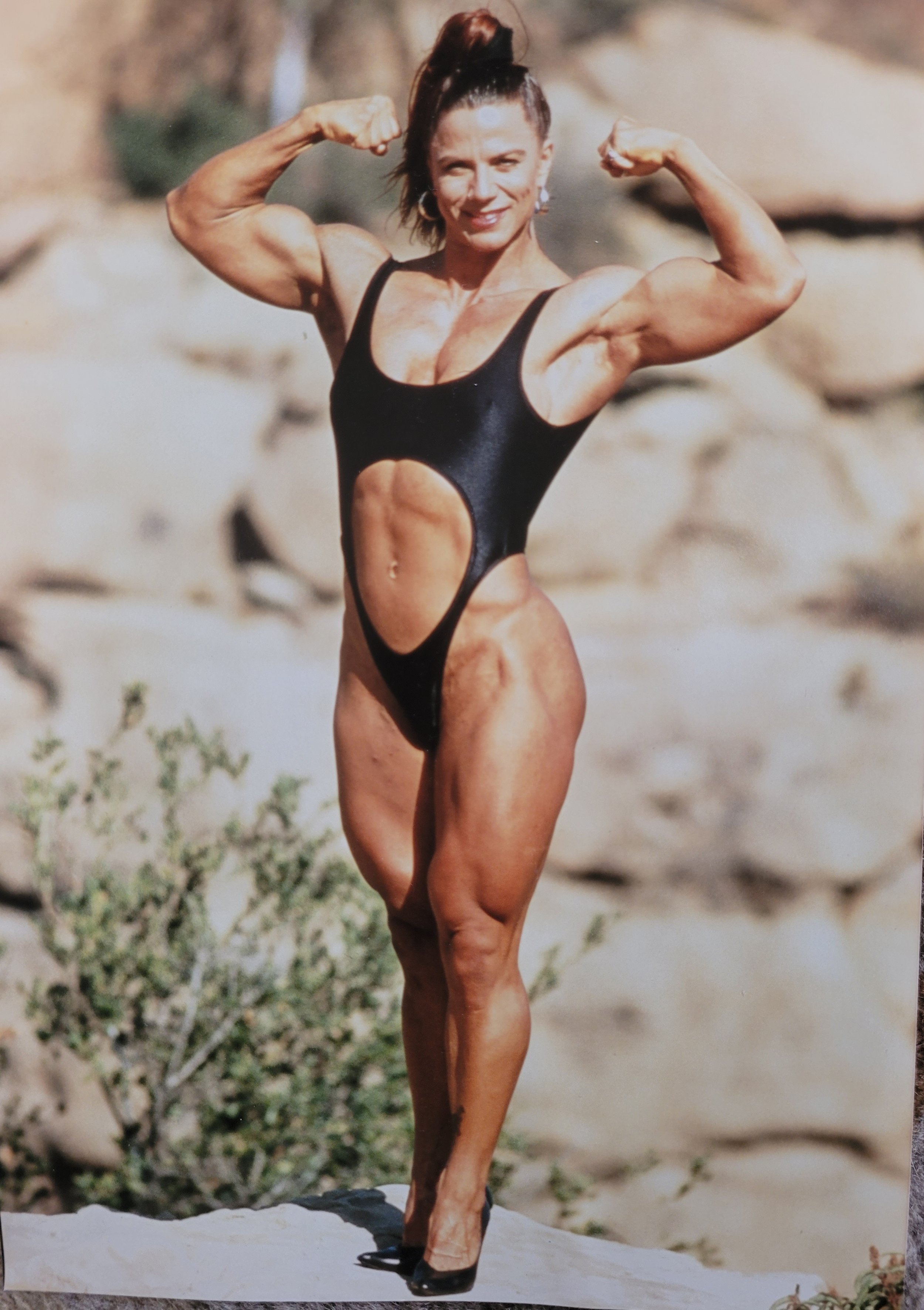Posing for a photo shoot in Topanga Canyon 1994
In my previous blog, “How Can You Know Your Purpose if You Haven’t Received Your Life?” I shared a personal story about how walking away from a bodybuilding career opened the door to discover the teachings of Family Constellation. A friend later asked me to expand on the sentence: “I was trying to prove something to the wrong audience.”
Referring to my competitive years in bodybuilding, I now see that I was attempting to validate myself by fueling all my rage into a path of physical transformation. And in reflecting on that, I was reminded of why I fell into it in the first place.
I grew up in a modest house in a small English village in the 1960s. My dad worked in London for the Evening Standard, in their advertising department. He would commute by train and always bring home a copy of The Sun newspaper.
The Sun was a working-class paper, and in 1970, it began publishing topless girls on page 3. These so-called "Page 3 girls," often as young as 16, took up nearly the entire page. I was eight years old. I remember feeling embarrassed by these images—boobs in your face, the bigger the better—and the glorification and objectification of women’s bodies. I was a very sensitive child, attuned to people’s sexual energy, even if I didn’t fully understand it.
This was the culture I grew up in. And quite frankly, the overt sexualization of women is still here—not less visible, but even more prolific and culturally acceptable now. It is everywhere: in pop culture, social media, music, fashion, advertising, and film. (Yes, men are objectified too, but nowhere near as pervasively.)
When I hit puberty, I was distraught. My fit, athletic body turned into a voluptuous figure. Most women would have died for a body like mine, but I hated it. If I’d had access to the kinds of body-altering procedures available now, I might have tried to change everything about myself. Fortunately, that wasn’t an option back then.
In my late teens, I got a part-time job at an Afro-Caribbean recreation center working in their art department. The center had a gym, and my boss used to weight train. He showed me pictures of Arnold Schwarzenegger and other famous bodybuilders. I was intrigued. I asked him to teach me how to lift weights, and he showed me the basics. I started training alone in the empty gym.
Soon, word got around. A woman lifting weights was unheard of at the time. As I did bicep curls in front of the mirror, I saw men’s faces peering through the window, jumping up to get a glimpse. They were laughing and calling me names like "big titty woman" and "dyke bitch" in Jamaican accents. Humiliated, I stopped.
Several years later, after moving to New York, I saw a light-skinned woman in a restaurant with striated shoulder muscles. I had never seen that on a woman before. Fascinated, I knew I wanted that.
In early 1980s NYC, it was trendy and socially acceptable for women to lift weights. I joined a midtown gym and became hooked. After three years, I started competing locally. I loved the training. Competing was a way to show off what I had achieved.
My attitude toward men who stared at me was, "You want something to look at? Look at this." Covertly, I would flex my chest, activating the striations that looked like feathers. It was a revenge fantasy—a defiant, performative response to a culture that had always objectified me.
But ultimately, it backfired. I was called a freak by non-bodybuilders. The bodybuilding community was insular, cultish. I didn’t make it to the top ranks, largely because I wasn’t willing to compromise in the ways that were expected.
Bottom line: I was looking in all the wrong places for self-worth.
Self-worth starts within. (I found out later.)
I now see this misplaced desire for value in many women:
Strippers, sex workers, OnlyFans creators
Sugar babies, dominatrixes
Trophy wives
Women in the "spiritual sexuality" scene, like those affected by the OneTaste organization, whose founder and executive were recently convicted after staff claimed they were underpaid and instructed to perform sexual acts with high-paying prospective clients—all under the guise of healing.
And then there's the Diddy trial. Women testified to being coerced with money, fame, and luxury into degrading situations called "freak offs" where they were filmed having sex with other well endowed male entertainers while under the influence of drugs. An anonymous woman called Jane Doe, testified, claiming she did it to please Diddy, so he would love her in return.
All of this speaks to a deeper issue: misplaced self-worth. And believe it or not, it can be healed.
Through Family Constellation work, we can uncover unconscious entanglements with ancestors who may have been exploited, abused, or unseen. Many women are reenacting old traumas in new forms. The roles may look different, but the root is the same.
Women will never find the fulfillment they seek by offering themselves in this way. It may work temporarily, but eventually, like me, they may wonder why they are so unhappy and unfulfilled.
There is another way.
There is wholeness in being seen—truly seen—within your family system, your ancestry, your own body.
And that is where healing begins.
If any part of this resonates—if you’ve ever felt unseen, misunderstood, or shaped your identity around someone else’s story—you’re not alone. These are often inherited patterns, passed down silently through generations. That’s the beauty of Family Constellation work: it helps bring what’s hidden into the light, so you can finally live your own life.
This is the kind of exploration we dive into in my 8-month Foundations course starting August 30. You can learn more here.
Did this bring anything up for you? — feel free to reply or share in the comments.

